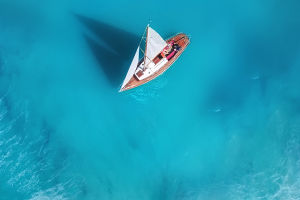Red-crowned cranes are large birds native to East Asia, especially China, Japan, and Korea. They are known for their striking appearance, with a patch of red skin on the head and white feathers that contrast with the black markings on the wings.
Red-crowned cranes are also known for elaborate courtship displays that include dancing, shouting, and even throwing sticks and grass into the air. These displays are often captured in photos and videos, as they are popular attractions for tourists and wildlife enthusiasts.
Photographing red-crowned cranes is an exciting experience for wildlife photographers. Here are some tips to help you capture stunning images of these magnificent birds:
1. Plan your visit: Research the best times and places to see red-crowned cranes. They are migratory birds and their behavior varies with season and location.
2. Choose the right equipment: A camera with a fast shutter speed and a telephoto lens (at least 300mm) is essential to capture detailed images of your crane. A tripod or monopod can help stabilize the camera and prevent blur.
3. Be patient: Red-crowned cranes are wild animals and may be hesitant when approaching humans. Wait quietly and observe the birds from a distance so as not to startle them.
4. Watch their behavior: Watch cranes closely to predict their movements and capture action shots. Look for interesting behaviors such as courtship displays, feeding, or taking off.
5. Be aware of the environment: Red-crowned cranes are a protected species, so it's important to respect their habitat. Avoid disturbing birds, stay on designated trails, and obey any park rules and regulations.
6. Lighting: Early morning and evening are the best time to shoot red-crowned cranes because the light is softer and more pleasing. The golden hour before sunset can create a warm, beautiful glow on a bird's plumage.
7. Experiment with composition: Consider using different angles and perspectives to add interest to your images. You can try shooting from a low angle or taking a bird's-eye view from above.
Photographers looking to take photos of red-crowned cranes may benefit from using a telephoto lens to capture close-ups without disturbing the birds. With patience, practice, and a little luck, you can capture stunning images of red-crowned cranes in their natural habitat.
Overall, while red-crowned cranes can pose some challenges for photographers, they are also worthy subjects for their beauty and fascinating behavior.
If you are interested in other animal photography, hope these tips can help you.
1. Know the animal you are photographing: Before photographing an animal, take the time to understand its behavior, habitat, and movement patterns. This knowledge will help you predict their movements and capture better shots.
2. Use the right equipment: Using the right equipment is essential for animal photography. A camera with fast autofocus and a telephoto lens can help you capture sharp and detailed images of animals from a distance. A tripod or monopod can also be used to stabilize the camera.
3. Lower to their level: For more engaging and intimate photos of animals, try lowering them to their eye level. This technique can help create a sense of connection between the viewer and the animal.
4. Use natural light: Natural light can help you capture more vivid and realistic images of animals. Try shooting during golden hour — the time after sunrise or just before sunset when the light is softer and more captivating.
5. Be patient and observant: Patience is key when photographing animals. Wait for the right moment to capture your footage, and watch the behavior of animals to predict their movements.
6. Respect their space: When photographing wild animals, it is important to respect their space and avoid disturbing their natural behavior. Keep a safe distance and avoid disturbing their environment.
Animal photography is challenging but also rewarding. With these tips, you can improve your skills and capture stunning images of animals in their natural habitat.


